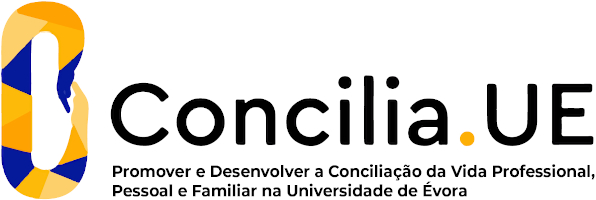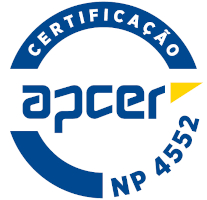2024
Renaissance and Baroque Architecture
Name: Renaissance and Baroque Architecture
Code: ARQ02512I
3 ECTS
Duration: 15 weeks/78 hours
Scientific Area:
Architecture
Teaching languages: Portuguese
Languages of tutoring support: Portuguese, English
Regime de Frequência: Presencial
Presentation
Culture and architeture from Renaissance to Rococo.
Sustainable Development Goals
Learning Goals
"Do Humanismo às Cidades Ilustrada" is the central theme of the curricular unit, Architecture of Renaissance and Baroque:
1. Approach to territory and landscape, cities and buildings of Renaissance, Mannerism and Baroque, revelling briefly the Architectonic Culture of this period, as well as their existential dimensions.
2. Critical identification and characterization of one set of buildings of Renaissance, Mannerism and Baroque, circumscribing logic, matrices, models and fundamental themes, aiming to increase and enrich students' architectonic culture.
3. Critical and identification dismantling of connexions space, shape, architectonic materiality and fruition in paradigmatic study cases of Renaissance, Mannerism and Baroque Architectures, looking for delivering knowledge and tools able to stimulate creativity and the Architecture Project process.
1. Approach to territory and landscape, cities and buildings of Renaissance, Mannerism and Baroque, revelling briefly the Architectonic Culture of this period, as well as their existential dimensions.
2. Critical identification and characterization of one set of buildings of Renaissance, Mannerism and Baroque, circumscribing logic, matrices, models and fundamental themes, aiming to increase and enrich students' architectonic culture.
3. Critical and identification dismantling of connexions space, shape, architectonic materiality and fruition in paradigmatic study cases of Renaissance, Mannerism and Baroque Architectures, looking for delivering knowledge and tools able to stimulate creativity and the Architecture Project process.
Contents
1. Permanence of Classic Architecture Culture - Egipt, Grece and Rome - in Antiquity and Middle Age Territories and Architectures.
2. East Rome Territories and Architectures. Approach to territory and landscape; models and buildings' themes; conception, articulation and formal, spatial and material meaning.
3. Territories and Architectures of West Islam. Approach to territory and landscape; models and buildings' themes; conception, articulation and formal, spatial and material meaning.
4. RomanicTerritories and Architectures. Approach to territory and landscape; models and buildings' themes; conception, articulation and formal, spatial and material meaning.
5. Gothic Territories and Architectures. Approach to territory and landscape; models and buildings' themes; conception, articulation and formal, spatial and material meaning.
6. Permanence of Antiquity and Middle Age Architectonic Culture in Humanism Era.
2. East Rome Territories and Architectures. Approach to territory and landscape; models and buildings' themes; conception, articulation and formal, spatial and material meaning.
3. Territories and Architectures of West Islam. Approach to territory and landscape; models and buildings' themes; conception, articulation and formal, spatial and material meaning.
4. RomanicTerritories and Architectures. Approach to territory and landscape; models and buildings' themes; conception, articulation and formal, spatial and material meaning.
5. Gothic Territories and Architectures. Approach to territory and landscape; models and buildings' themes; conception, articulation and formal, spatial and material meaning.
6. Permanence of Antiquity and Middle Age Architectonic Culture in Humanism Era.
Teaching Methods
The teaching methodology favours the theoretical exposition, given that this curricular unit is theoretical, and promotes the retention of learning through the completion of individual and group tasks:
a. Participatory lectures
b. Reading and discussion of texts (individual and group work)
c. Tutorial monitoring
d. Written tests
f. Participation and attendance
This course is theoretical, so the attendance regime does not apply. However, it is highly recommended that students attend classes, which is only possible if they are present.
This course can be assessed in one of the following ways, in accordance with the Academic Regulations (AR), which are available on the SIIUE:
Continuous Assessment regime (CA);
Final Assessment regime (FA).
a. Participatory lectures
b. Reading and discussion of texts (individual and group work)
c. Tutorial monitoring
d. Written tests
f. Participation and attendance
This course is theoretical, so the attendance regime does not apply. However, it is highly recommended that students attend classes, which is only possible if they are present.
This course can be assessed in one of the following ways, in accordance with the Academic Regulations (AR), which are available on the SIIUE:
Continuous Assessment regime (CA);
Final Assessment regime (FA).
Assessment
Continuous Assessment regime (CA):
2 written tests (WT1 and WT2) + participation (P). The Final Grade (FG) is calculated using the formula: FG = {[(WT1+WT2): 2]x0,90}+(Px0,10)
Students with FG ≤9.4 fail CA and have access to the Resit Exam, consisting of a written (W) and oral (O) test.
Access to the oral exam (O) requires a mark ≥7.5 in the written exam (W). A mark of ≥9.5 in the written exam (W) allows the oral exam (O) to be exempt.
The Final Grade (FG) is calculated according to one of the formulae:
FG = {(E+O):2]x0,60)} + (WT1 or WT2x0,40) or NF = (Ex0,60) + [(F1 or F2)x0,40].
A student who misses WT1 or WT2 will proceed to the Final Assessment regime.
Final Assessment regime (FA):
The Normal Exam (NE) and the Resit Exam (RE) consist of a written test (W) and an oral test (O).
Access to the oral exam (O) requires a mark ≥ 7.5 in the written test (W). The Final Grade (FG) for NE and RE is calculated according to the formula:
FG= (E+O):2
2 written tests (WT1 and WT2) + participation (P). The Final Grade (FG) is calculated using the formula: FG = {[(WT1+WT2): 2]x0,90}+(Px0,10)
Students with FG ≤9.4 fail CA and have access to the Resit Exam, consisting of a written (W) and oral (O) test.
Access to the oral exam (O) requires a mark ≥7.5 in the written exam (W). A mark of ≥9.5 in the written exam (W) allows the oral exam (O) to be exempt.
The Final Grade (FG) is calculated according to one of the formulae:
FG = {(E+O):2]x0,60)} + (WT1 or WT2x0,40) or NF = (Ex0,60) + [(F1 or F2)x0,40].
A student who misses WT1 or WT2 will proceed to the Final Assessment regime.
Final Assessment regime (FA):
The Normal Exam (NE) and the Resit Exam (RE) consist of a written test (W) and an oral test (O).
Access to the oral exam (O) requires a mark ≥ 7.5 in the written test (W). The Final Grade (FG) for NE and RE is calculated according to the formula:
FG= (E+O):2
Teaching Staff
- João Gabriel Candeias Dias Soares [responsible]
- Júlia Zurbach Varela





















